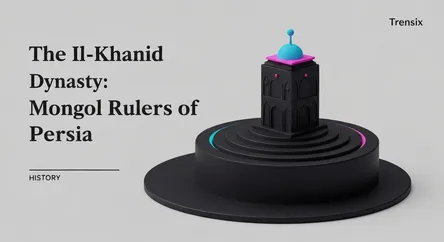History
The Il-Khanid Dynasty: Mongol Rulers of Persia

Discover the Il-Khanid dynasty, the Mongol rulers who reshaped Persia, ended a caliphate, and sparked a unique cultural renaissance.
What is it?
The Il-Khanid dynasty was a Mongol khanate that ruled over Persia and much of West Asia from 1256 to 1335. Founded by Hulagu Khan, a grandson of the Mongol conqueror Genghis Khan, its name "Il-Khan" means "subordinate khan," signifying its initial allegiance to the Great Khan of the Mongol Empire. The dynasty was established after Hulagu's campaigns in the Middle East, which famously culminated in the 1258 sack of Baghdad and the termination of the Abbasid Caliphate. The Ilkhanate's territory covered modern-day Iran, Iraq, Afghanistan, Azerbaijan, and parts of Turkey.
Why is it trending?
The Il-Khanid period is a focal point for historians studying cultural exchange and state formation. Despite their destructive beginnings, the Il-Khanids reunified Persia as a distinct political entity after centuries of fragmentation. Their rule is noted for a remarkable cultural flourishing, often called a Persian renaissance, where art, architecture, and science thrived under their patronage. This era saw a unique fusion of East Asian and Perso-Islamic traditions. Furthermore, the dynasty's eventual conversion from Buddhism to Islam under Ghazan Khan in 1295 is a significant topic of study in religious and political history.
How does it affect people?
The Il-Khanid dynasty had a profound and lasting impact on the region. By unifying Persia, they laid the political and territorial groundwork for the later Safavid dynasty and, ultimately, the modern nation of Iran. Their patronage of the arts led to enduring architectural masterpieces and a new vocabulary in decorative arts that influenced regions from Anatolia to India. The dynasty's administration and promotion of trade routes like the Silk Road fostered significant cross-cultural connections between the East and West. Their rule also permanently altered the demographic and religious landscape of the Middle East.